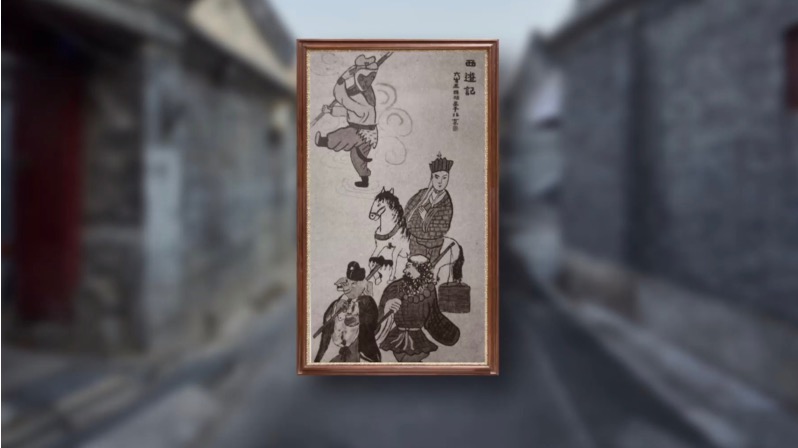
In 1958, the six-year-old Wang Mingming won an international painting award with his "Journey to the West." /CMG
In 1958, the six-year-old Wang Mingming won an international painting award with his "Journey to the West." /CMG
04:25

Ink wash painter Wang Mingming has been creating paintings inspired by ancient Chinese poetry for more than four decades. Under his dynamic brush, the works of Du Fu (712-770) and Li Bai (701-762), famous Tang Dynasty poets, gained new forms on paper. Wang's exquisite depiction through the simple brush and ink expresses the charm of classic literature.
Wang exuded his talent for drawing at an early age. When he was 6 years old, his father took him to an art gallery event, where Wang created the painting of a trout on the spot. His work was purchased by an artist and also drew the attention of Chinese painter, calligrapher and art educator Li Kuchan (1899-1983).
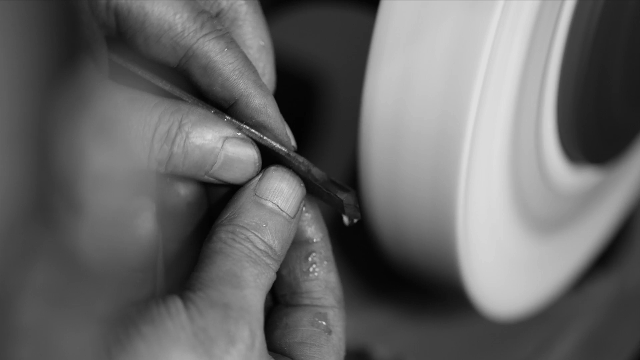
Wang operating a milling cutter. /CMG
Wang operating a milling cutter. /CMG
"He liked me a lot and told my father to take me to his house in our spare time, and that he would evaluate my work," Wang recalled. Since then, Li took the young boy under his wing and guided him in his formative years.
However, at the age of 17, the aspiring young artist's life took an abrupt turn. He was assigned to work at the Beijing Hand Tractor Factory as a milling machine operator.
After a day of hard work, Wang still picked up his paint brush despite the soreness in his arms. He grasped every spare second to practice painting and sketched everywhere he could. Sometimes his hands were still shaking from exhaustion. He would first paint the broad outlines of tree branches, and later fill in the finer details when he recovered.
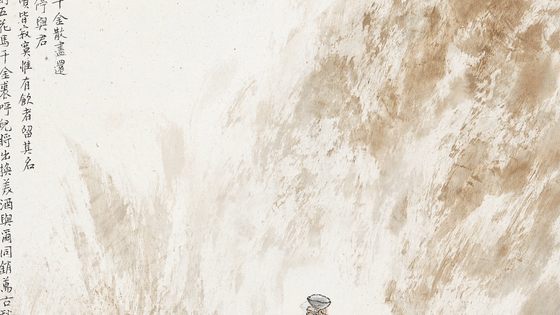
Wang Mingming's ink and wash painting inspired by ancient Chinese poet Li Bai's "Invitation to Wine." /CMG
Wang Mingming's ink and wash painting inspired by ancient Chinese poet Li Bai's "Invitation to Wine." /CMG
During his 10 years working in the factory, Wang never gave up his passion for painting. He summarized, "I have made an important transformation in painting, which is the training in modeling and grasping the basics of creation."
In the late 1970s, Wang became a resident artist at the Beijing Fine Art Academy. He cherished every opportunity to learn from master painters there. He studied figure, landscape, birds and flowers painting, and even calligraphy before finally discovering his focus. "I decided to paint ancient Chinese subjects. The source of traditional Chinese culture is a fresh current," Wang reflected.
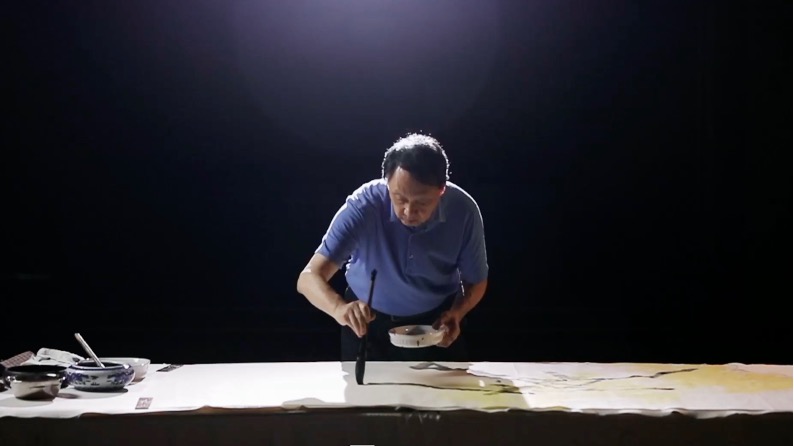
Chinese artist Wang Mingming painting with brush and ink. /CMG
Chinese artist Wang Mingming painting with brush and ink. /CMG
Due to an influx of Western art at that time, many artists abandoned the Chinese painting methods. But Wang persisted in practicing traditional Chinese painting. To cultivate his understanding and taste, Wang has been traveling across China since the early 1980s, penning his observations and thoughts in nature.
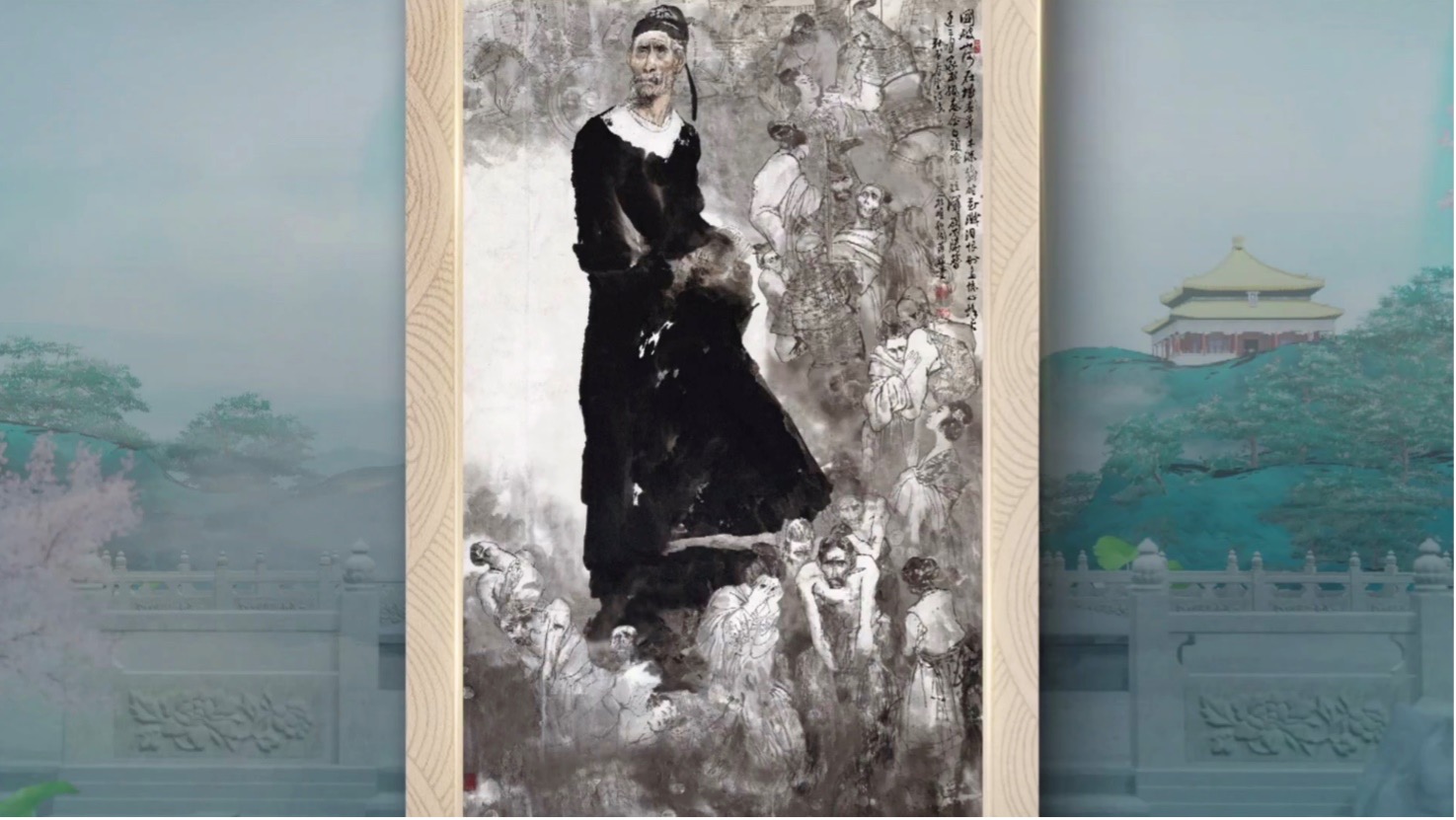
In 1980, Wang created the painting "Du Fu," inspired by the Chinese poet's classic piece titled "Spring View." /CMG
In 1980, Wang created the painting "Du Fu," inspired by the Chinese poet's classic piece titled "Spring View." /CMG
In 1980, Wang created the painting "Du Fu," inspired by the Chinese poet's classic piece titled "Spring View." In 1981, he created the historical figure painting “Evocation” to commemorate Chinese poet Qu Yuan. Since 2006, Wang has been working on a collection of poetry-inspired paintings, recreating scenes from 100 well-known ancient Chinese poems.
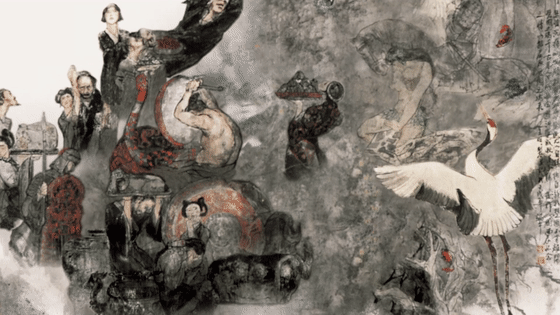
Wang Mingming's "Evocation" painted in 1981. /CMG
Wang Mingming's "Evocation" painted in 1981. /CMG
Looking back on his lifelong painting career, Wang said, "Reading poetry and painting poetic paintings is a learning process. It's like making wine. There is a process of transformation."